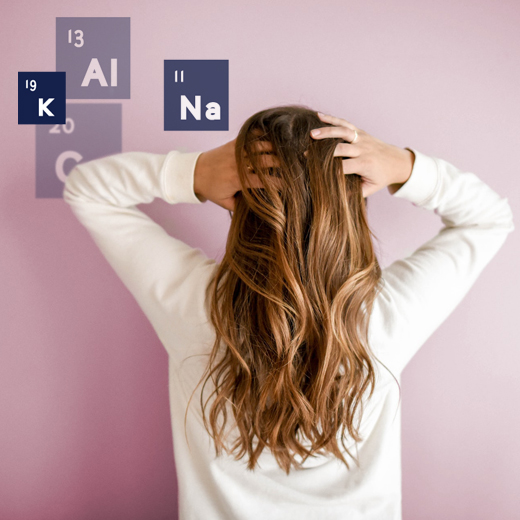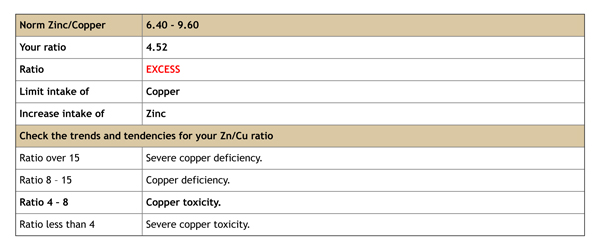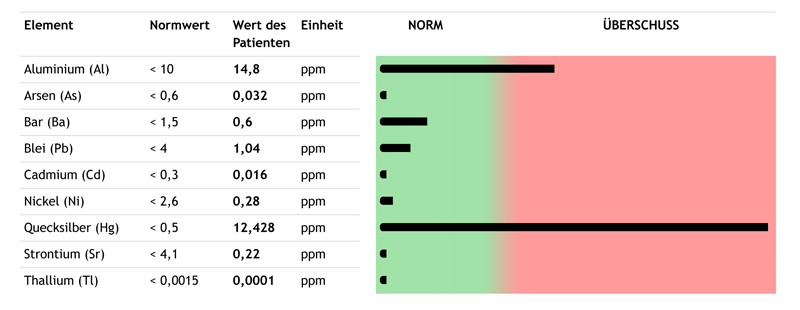
Excessive hair loss is a problem that affects both women and men. Physiologically, we lose 50 to 100 telogen hair (hair in the resting stage) every day. If it’s more than this, we’re dealing with balding, which affects scalp hair, although not all areas of the scalp are equally susceptible to it. From the point of view of a functional medicine specialist, the most common causes of hair loss seen in the clinic are hypothyroidism (including atrophic Hashimoto’s thyroiditis), vitamin and mineral deficiencies (including iron, vitamin B12, folic acid, vitamin D3), omega-3 deficiency, active viral and bacterial infections (including Helicobacter pylori), Canidida albicans overgrowth and small intestinal bacterial overgrowth (SIBO). Undiscovered food hypersensitivity (commonly known as food allergies), non-Coeliac gluten sensitivity, gut dysbiosis (leaky gut syndrome) and endocrine disorders. Each of these causes requires a different treatment, so to choose a very effective way to treat excessive hair loss, extensive laboratory testing must be performed. One of the tests that’s worth doing is EHA – elemental hair analysis.
The problem of hair loss concerns, among others, up to 90% of women after childbirth. This is a natural consequence of the extended hair growth phase during pregnancy. Noticeable hair loss is delayed and takes place approximately one to four months after labour, usually in the third or fourth month. This is due to a rapid drop in oestrogen and progesterone levels. However, breastfeeding women experience a greater drop in oestrogen levels due to an increase in prolactin – the hormone responsible for milk production. Unfortunately, a high concentration of prolactin inhibits hair growth. Balding may pass after approximately six months, but it may take up to a year for hair to return to its former appearance and thickness. In addition, when there is extensive, permanent stress, an unbalanced diet (often an elimination diet introduced without the supervision of a dietitian and without supplementing the necessary minerals) or additionally anaemia, hair may never return to its pre-pregnancy state.
The nutrient deficiencies that most often occur in patients suffering from hair loss include biotin, sulfur-containing amino acids, pantothenic acid, B vitamins, zinc, iron and silicon. A healthy scalp that is well moisturised and has good blood circulation provides the perfect environment for the proper growth of new hair. Ingredients that actively support skin health are B vitamins (including folic acid), which are responsible for the initiation and multiplication of skin cells, as well as selenium and iodine, which affect its healthy appearance. Iron deficiency results in problems with cellular respiration, which can negatively affect cell division in hair bulbs and subsequently lead to brittleness
and hair loss.
Biotin, pantothenic acid and silica are the ingredients that are most commonly found in hair-growth supplements. Why? Biotin accumulates particles of bioavailable sulphur, improves their incorporation into the structure of the hair shaft, which improves hair elasticity and bounce. It also affects the activity of the hair follicle. The supply of biotin supports skin health by balancing excessive sebum production by the sebaceous glands. The maximum safe dose of biotin is 900 µg, which is worth remembering when taking several products that support hair condition.
On the other hand, pantothenic acid is responsible for the absorption of water by the hair shaft, which makes it more elastic. It also affects processes associated with the oiling of the hair shaft and scalp, and helps protect against drying out and evaporation, as well as UV radiation. Copper and vitamin A affect the proper pigmentation of the hair shaft. Silicon maintains the proper elasticity of the epidermis, collagen and elastin fibres in the skin. In clinical trials, administration of 10 mg of silicon per day for nine months had a positive effect on hair strength, stretching, flexibility and thickness.
In clinical trials, administration of 10 mg of silicon per day for nine months had
a positive effect on hair strength, stretching, flexibility and thickness.
hormonal status
START WITH TESTING
If you’re suffering from excessive hair loss, finding the root cause of the problem is key. The first step is performing extensive laboratory testing. To this end, it’s worth performing the EHA test – elemental hair analysis. Based on the EHA result, as well as the results of urine and blood tests, the following parameters should be checked and consulted with a doctor and clinical dietitian:
ratio of calcium to potassium
Hair loss is one of the first signs of hypothyroidism, including atrophic Hashimoto’s thyroiditis. Thanks to the EHA test, and more specifically the information obtained on the ratio between calcium and potassium in the body, we’ll find out whether the thyroid has a tendency to hypothyroidism, which may be the cause of the problem associated with balding. A thyroid panel (TSH, fT3, fT4, rT3 and anti-TPO and anti-TG antibodies) should also be performed.
saturation of the body with iron and zinc
Iron and zinc deficiency is one of the most common causes of hair loss. EHA is also a great tool to determine their levels in the body. The EHA also determines the ratio of zinc to copper, which are two key antagonist minerals (Figure 1). Vegetarians (particularly vegans) have a high risk of zinc deficiency due to elevated copper levels. However, a serum test will determine the level of ferritin (iron-storage protein) and alkaline phosphatase (an enzyme whose reduced level may indicate zinc deficiency). Optimal serum ferritin should be 40-60 µg/L and alkaline phosphatase should be >70 U/L. Combining various diagnostic methods gives us the opportunity to select the best and most-effective therapeutic methods.
Figure 1. The ratio of zinc to copper in an elemental hair analysis in a patient with atrophic Hashimoto’s thyroiditis, performed at the Lifeline Diag laboratory.
saturation of the body with silicon, selenium and iodine, and sulphur status
Good hair conditioning also needs silicon, selenium, iodine and sulphur, which are nutritional elements that impact, among other things, scalp elasticity, the strength of the anchoring of the hair bulb, hair elasticity and proper hair growth. Their deficiency is characteristic for people suffering with baldness and hair loss. So, if you have these types of symptoms, it’s necessary to find out and regularly check the concentration of these elements in the body. The laboratory method that most accurately shows the degree of saturation of the body in macro and microelements is the ICP-OES technique – optical emission spectrometry with inductively coupled plasma excitation, and the test that’s performed using this method is elemental hair analysis (Figure 2).
Figure 2. The concentration of nutrients in an elemental hair analysis in a patient with atrophic Hashimoto’s thyroiditis, performed at the Lifeline Diag laboratory.
heavy metal load
The load of heavy metals in the body – mainly aluminium and mercury – is correlated with low levels of zinc in the body and inhibited detoxification processes, and can be a direct cause of hair loss (Figure 3). EHA diagnoses the degree of the body’s load of toxic elements (similarly to nutrients); in addition to mercury and aluminium, it also determines the level of arsenic, barium, cadmium, nickel, lead, strontium and thallium. The presence of these elements, depending on their concentration in the body, to a lesser or greater extent (but always) is manifested by scalp and hair problems.
Figure 3. The concentration of toxic elements in an elemental hair analysis performed at the Lifeline Diag laboratory.
hormonal status
One of the most common causes of hair loss is hormonal imbalance. The hormonal status of the body should be examined to confirm or exclude this. EHA also proves to be a great diagnostic tool in this regard. Hormones are the best indicator of biochemical changes, trends and tendencies. They have a direct relationship with minerals. They also affect both the level and proportions of minerals. EHA allows us to pay attention to the minerals that in the given moment are needed for hormonal glands or in a sense constitute an obstacle to be eliminated for them.
When balanced, hormones fulfil their tasks. However, this doesn’t mean that their cooperation is always smooth. The insulin hormone (when it’s in excess) can disrupt thyroid and adrenal hormone levels, increase oestrogen, and lower progesterone. This is similar to parathyroid hormones, which in a way are the opposite of thyroid ones. Hormonal chaos means metabolic chaos. This in turn results in a trend and tendencies to develop diseases, including hair loss or baldness. Therefore, controlling such trends becomes essential. Intensive excretion of elements into the hair or their retention in the body results in an excess or deficiency of a given element for the proper functioning of specific glands and hormones. That’s why EHA allows us to monitor the mineral status of the body, and thus enables the assessment of the correct functioning of the endocrine system.
gut microbiota status
The composition of the microbiome is largely responsible for the proper absorption of nutrients. Therefore, if macro and micronutrient deficiencies were diagnosed by way of EHA, we can suspect that one or a direct cause of baldness is a problem with intestinal microflora. An increasingly common problem among patients with deficiencies in iron, vitamin B12 or zinc (which is responsible for the condition of the hair) and patients reporting problems with the gastrointestinal tract (bloating, gas, diarrhoea or constipation) is small intestinal bacterial overgrowth (SIBO), which requires correct diagnosis (a hydrogen-methane breath test) and consultation with a gastroenterologist.
undiscovered food hypersensitivity
For people with excessive hair loss or balding, it’s also worth ruling out possible food hypersensitivities. Very often in the case of hair loss, extreme non-Coeliac gluten sensitivity and allergy to cow’s milk proteins are seen in the clinic. However, when introducing elimination diets for food intolerance, it’s important to remember to supplement nutrients from other “safe” sources. This is because insufficient supply of macro and microelements may intensify hair loss. The best way to avoid such a risk is by regular diagnostic check-ups using EHA, which will show if the elimination diet is beneficial and isn’t contributing to the problem of hair loss.
vitamin status
An adequate supply of vitamins is also necessary for scalp health and strong hair. 25(OH)D3, B12 and folic acid. Optimal vitamin D3 concentration in the serum should be 60 – 80 ng/dL. On the other hand, when looking at possible supplementation with folic acid and vitamin B12, it’s worth considering additional MTHFR and COMT gene mutations in order to select the right active form.
However, no vitamins will be absorbed by a body that is not in a state of mineral balance. For example, abnormal levels of zinc, potassium or magnesium, elements antagonistic to vitamin D3 and B12 may limit their absorption. Therefore, before starting vitamin supplementation, you should do an EHA and first check whether the vitamins stand any chance of being used by the body in the fight against excessive hair loss.
NUTRITIONAL GUIDELINES BASED ON EHA RESULTS
Should you make changes to what you’re eating and your lifestyle if you’re suffering from hair loss? Definitely yes. Primarily, the nutrition plan should be based on fats with high anti-inflammatory potential (for example, borage oil, evening primrose oil, linseed oil or blackcurrant oil), good sources of protein (fish, seafood, meat from organic farming), fruit with a low glycaemic index (blueberries, bilberries, raspberries, strawberries) and vegetables (leafy greens, which are a good source of folic acid).
ELEMENTS THAT PREVENT HAIR BRITTLENESS AND LOSS
ZINC – affects the creation of creatine, which is a protein that’s the basic building block of hair.
IRON – ensures proper cellular respiration and cell division in the hair bulb.
SILICON – increases the elasticity and thickness of the hair and its tensile strength. Maintains the proper elasticity of the epidermis, collagen and elastin fibres in the skin.
SELENIUM AND IODINE – contribute to a healthy scalp.
SULPHUR – ensures hair flexibility and elasticity.
COPPER – affects the proper pigmentation of the hair shaft.
With a confirmed non-Coeliac gluten hypersensitivity, cereals that are a source of gluten (mainly wheat and products based on it) should be limited. An important element is also to regulate sleep, limiting exposure to blue light in the evening, and coping with stress. The key issue, however, is the complete personalisation of dietary recommendations. For patient A, the root cause of hair loss may be chronic stress, sleep deprivation, or hypothyroidism. On the other hand, in patient B, hair loss could be caused by overgrowth of Candida albicans, or iron and vitamin B12 deficiency. The nutritional recommendations and lifestyle interventions for these two situations will differ. An optimal diet that’s individually tailored to the patient’s metabolic type is made possible by the result of EHA, which shows the body’s mineral excesses and deficiencies.
hormonal status
DIAGNOSTIC AND THERAPEUTIC VALUE OF EHA TESTS FOR THE PROBLEM OF HAIR LOSS
- DETERMINES THE DEGREE OF SATURATION OF THE BODY WITH ELEMENTS PREVENTING HAIR LOSS.
- DETERMINES THE DEGREE OF LOAD OF TOXIC ELEMENTS CAUSING HAIR LOSS ON THE BODY.
- SHOWS DISORDERS OF THE HORMONAL SYSTEM AND THYROID, AS WELL AS OF THE MICROFLORA COMPOSITION, WHICH ARE A DIRECT CAUSE OF BALDING AND HAIR LOSS.
- HELPS DETERMINE THE CAUSE OF THE PROBLEM, AND THUS CHOOSE THE BEST FORM OF TREATMENT, INDIVIDUALLY TAILORED TO THE PATIENT’S NEEDS, INCLUDING DIET AND SUPPLEMENTATION.
If you have a hair loss problem, you should consult a dermatologist, endocrinologist, trichologist and clinical dietitian. The first step to finding the root cause of problems in each of these clinics is extended laboratory testing, on which in addition to the clinical and nutritional history, further vitamin and mineral supplementation should be based. Only a multifaceted and individual approach to hair loss enables effective treatment. One of the studies that brings excellent results in determining the problem and selecting the most effective treatment is EHA.
Lifeline Diag
















